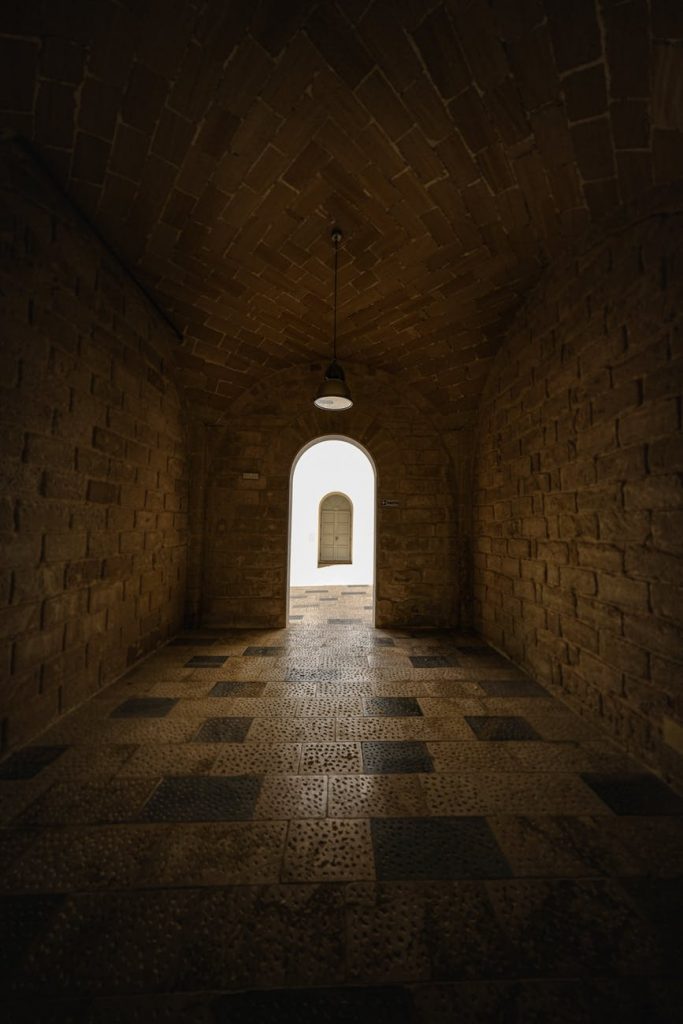The first step to take when waterproofing your basement is to diagnose the problem. What is the source of the water or moisture? It could either be coming from indoor humidity or water from outside the house.
You can determine if moisture is coming from inside or outside the house by taping aluminum foil to your basement walls. Check back in a few days to see if water gathers on the outside of the foil or underneath it.
If it gathers underneath the foil, then the moisture is leaking in through the walls from outside. If it gathers on top of the foil, the moisture is coming from internal humidity.

Here are four ways to cut down on internal and external moisture:
4 Ways to Waterproof Your Basement
#1. Cut Down on Common Causes of Humidity
Humid air is the number one cause of high levels of internal moisture. You can cut down by sealing dryer vents with foil tape.
This will prevent excess humid air from filling your basement. Duct tape will just fall off. Make sure you use foil tape and get all of the leaks.
The next time you run the dryer, check the vent for leaks and tape them shut while the dryer is running. If you just tape up where you think there are leaks, you’re likely to miss spots.
If you have a bathroom in your basement, you should add a vent fan, especially if the bathroom includes a shower. Hot showers will significantly increase the humidity in your basement and the rest of your house when that hot steam makes its way upward.
If all else fails, you can invest in a dehumidifier to lower indoor humidity. If the issue is small, you can get fairly cheap dehumidifiers for a room.
If your issue is big enough to require an industrial-sized dehumidifier, you’re better off contacting a professional basement contractor to find the root of the problem.
#2. Add a Waterproof Coat to Your Walls
You can buy waterproofing “paint” that fills in pores in concrete or masonry walls. This will keep outside water out of your house, but you need to apply the coating to bare walls in order for it to be effective.
Start by making sure the walls are clean. Mainly, you want to make sure there aren’t any solid particles stuck to the walls. You can use a wire brush to wipe them clean.
You should be provided with instructions. Follow them carefully. Make sure you paint a thick coat and apply a second coat. Your goal should be to cover every nanometer of wall space.
#3. Add Insulation to Your Walls and Pipes
Insulating your walls will cut down on condensation by keeping the walls warmer. It will also save you money in the winter by reducing your heating bills.
However, you shouldn’t insulate your walls if water is coming in from outside. You’ll just end up with mold. Instead, you can try extending your downspouts to lead rainwater away from your house.
Don’t forget to insulate your pipes as well. Cold pipes will create a lot of condensation in a basement. All you need is some foam insulation and scissors.
#4. Install a Sump Pump or Drainage System
If your basement is regularly flooding, you might need to install a system to get the water out. You can install your own sump pump relatively cheaply if you do it yourself. It’s dirty, hard work, but you’ll save a ton of money.
You’ll need draining tubing, the sump basket, and the pump. The materials are affordable. The labor is what will cost you if you hire a professional.
There are many guides online if you just search “how to install a sump pump.” There are written guides and video guides if you’re more of a visual learner.
Keep Water Out
Ultimately, your goal is to keep water out of your basement, whether it’s coming from inside or outside the house. Steve Schulz at Dry Basement Solutions says, “There are a lot of things that you can do on your own, but in extreme circumstances, it might be better to hire a professional to get the best results.”
A professional basement contractor will help you discover if the problem is coming from inside or outside the house and come up with a plan to solve it.
By adding insulation, waterproofing your walls, and cutting down on humidity yourself, you can at least rule out the more common causes of basement moisture.
That way, when the contractor inspects your house, they will be able to get to the root of the problem and solve it quickly.



